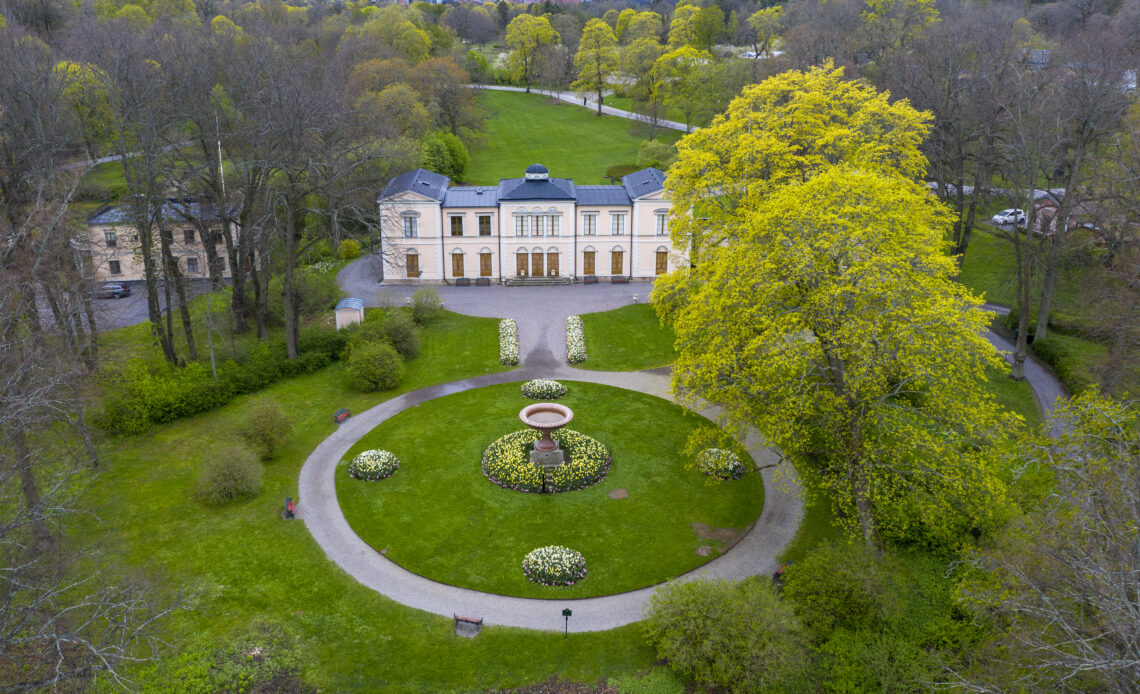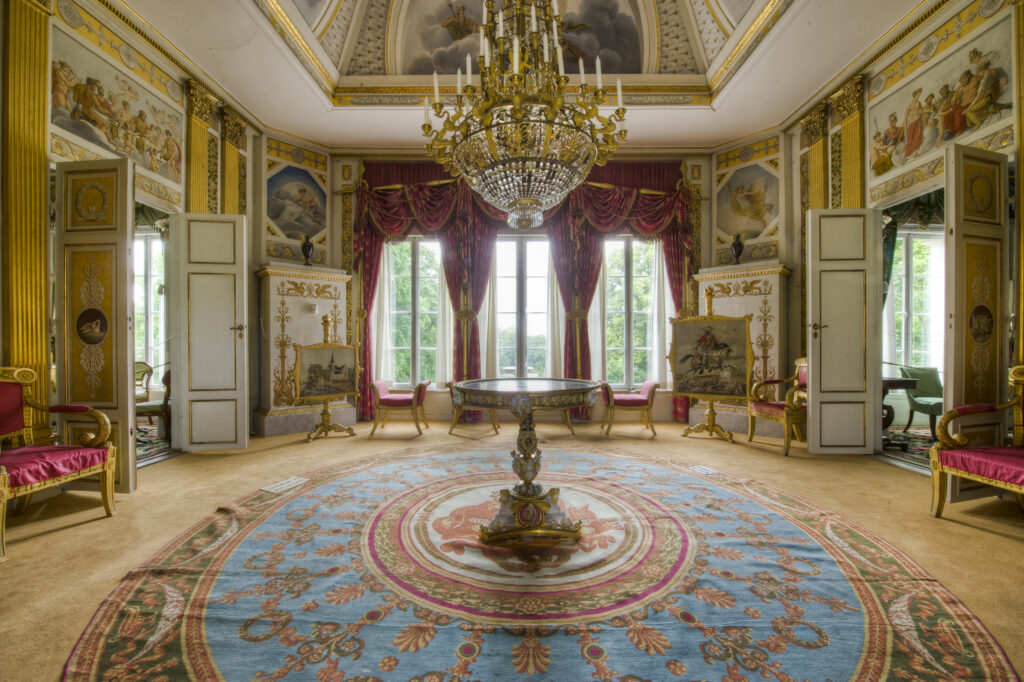
Rosendal Palace is one of the lesser-known royal buildings in Sweden, but that doesn’t mean it is less spectacular.
Located on the island of Djurgården, in central Stockholm, it was erected between 1823 and 1827 for King Karl XIV Johan – none other than Jean Bernadotte, the founder of the current ruling dynasty in Sweden.
The palace was created by Frederik Blom, one of the leading architects at that time, from prefabricated pieces, which explains the swift building time of just four years.
Rosendal was built on the grounds of what had been home to the original palace, which burned down in a devastating fire in 1819. The original design had been created by Fredrik August Lidströmer under the orders of the first Bernadotte King, and it was Lidströmer who also made the first sketches for the second iteration of the building.
Blom reworked those sketches and added the Queen’s Pavilion and the Guard’s Cottage to the final project. Interestingly, the architect had been an assistant to Jonas Lidströmer, father to Fredrik August, meaning that there was some continuity between the two in the design process.
Rosendal Palace was created to be a summer residence for the Royal Family, but it soon took on the duty of “royal escape” instead. It was a place where court rules were much more relaxed, which allowed for carriage rides and walks in the adjacent park.
To this day, the palace is still in its original state, making it a precious and unique reminder of the European Empire Style, with some of the interior rooms having been decorated with pieces brought over from the Royal Palace in order to preserve the memory of King Karl XIV Johan.
So strong was his influence that in Sweden, the Empire Style is known as Karl Johan Style, and it is displayed all throughout the palace with strong colours, wall-to-wall carpeting, stately curtain arrangements and mahogany furniture.

A standout piece is the Sèvres table, which has been placed at the centre of the Lantern Room. A gift from the King Louis Philippe of France to King Karl XIV Johan, the piece is made with painted Sèvres porcelain depicting the Throne Room is Pau Castle on the top – Pau being the native town of Jean Bernadotte. The most thoughtful detail, however, is the presence in the window recesses of the two urns that King Karl XIV Johan had gifted King Louis Philippe – a sign of the strong diplomatic ties that bind France and Sweden to this day.
The palace only served as a primary residence once – between 2015 and 2017, when Prince Carl Philip and Princess Sofia moved there while their main residence, Villa Solbacken, was undergoing renovations to bring it up to the standards needed to raise a growing family there.
Rosendal Palace is surrounded by a relatively small park, created in the same style as the building. Its main feature is the porphyry urn, located in a garden bed on the waterfront, and a bridge that King Karl XIV Johan had built to be able to ride to Ladugårdsgärde for military parades.
Unlike the palace, which is only open from June to August, the park can be enjoyed by the public all year round, and the maintenance services have created not only signs that explain the history and architecture of the complex but also The Royal Walks App, which can guide tourists through specific walks based on various themes through many royal palaces in Sweden.
Rosendal Palace is also celebrating 200 years in 2023, and for the occasion, the Swedish Royal Palaces services have extended guided tours of the palace interiors from May until September – a unique experience for anyone willing to celebrate a Golden Jubilee with a touch of the history that made it possible.

